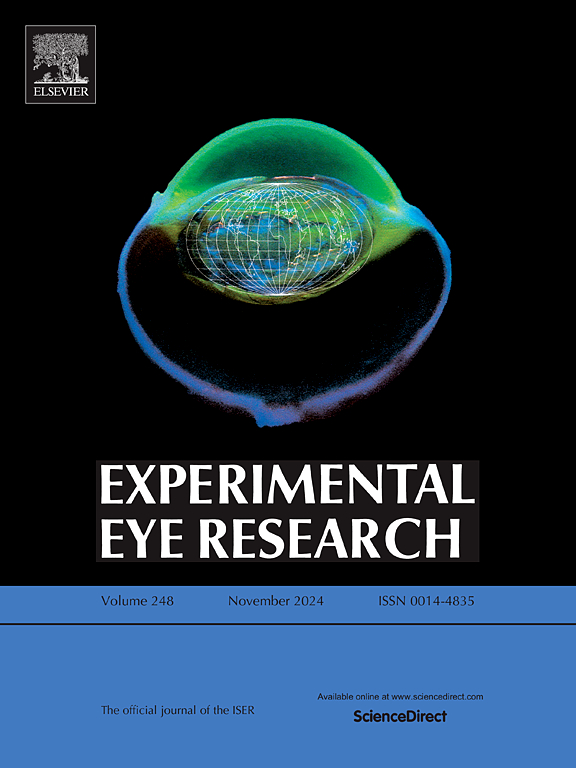Palmitic acid exacerbates experimental autoimmune uveitis by activating T helper 17 cells via regulating STING signaling
IF 3
2区 医学
Q1 OPHTHALMOLOGY
引用次数: 0
Abstract
Recent studies found that palmitic acid (PA), the most abundant fatty acid in human body, was increased in uveitis patients. However, its exact effect on uveitis has not been clarified. In this study, experimental autoimmune uveitis (EAU), an animal model of human uveitis, was successfully induced with interphotoreceptor retinoid-binding protein (IRBP) 651–670 and pertussis toxin. The immunized mice were treated with daily intragastric PA or vehicle from day 1–14. The results showed that PA could aggravate EAU activities and increase the proportion of T helper (Th) 17 cells as well as mRNA expression level of Il17a. There were no significant changes in Th1/Treg cell responses between these two groups. In vitro experiments showed that PA treatment could promote IRBP-specific Th17 cell response in association with increased proportion of Th17 cells as well as up-regulated expression of IL-17A. Proteomics showed an increased expression of stimulator of interferon genes protein (STING) in PA-treated mice as compared to vehicle-treated mice. H-151, a potent antagonist of STING, attenuated the activities of EAU and Th17 cell responses induced by PA. Moreover, NF-κB/IL-6 signaling pathway was found to be downregulated after H-151 treatment. Collectively, PA could exacerbate EAU severity possibly through the activation of Th17 cells mediated by up-regulating STING.
求助全文
约1分钟内获得全文
求助全文
来源期刊

Experimental eye research
医学-眼科学
CiteScore
6.80
自引率
5.90%
发文量
323
审稿时长
66 days
期刊介绍:
The primary goal of Experimental Eye Research is to publish original research papers on all aspects of experimental biology of the eye and ocular tissues that seek to define the mechanisms of normal function and/or disease. Studies of ocular tissues that encompass the disciplines of cell biology, developmental biology, genetics, molecular biology, physiology, biochemistry, biophysics, immunology or microbiology are most welcomed. Manuscripts that are purely clinical or in a surgical area of ophthalmology are not appropriate for submission to Experimental Eye Research and if received will be returned without review.
 求助内容:
求助内容: 应助结果提醒方式:
应助结果提醒方式:


